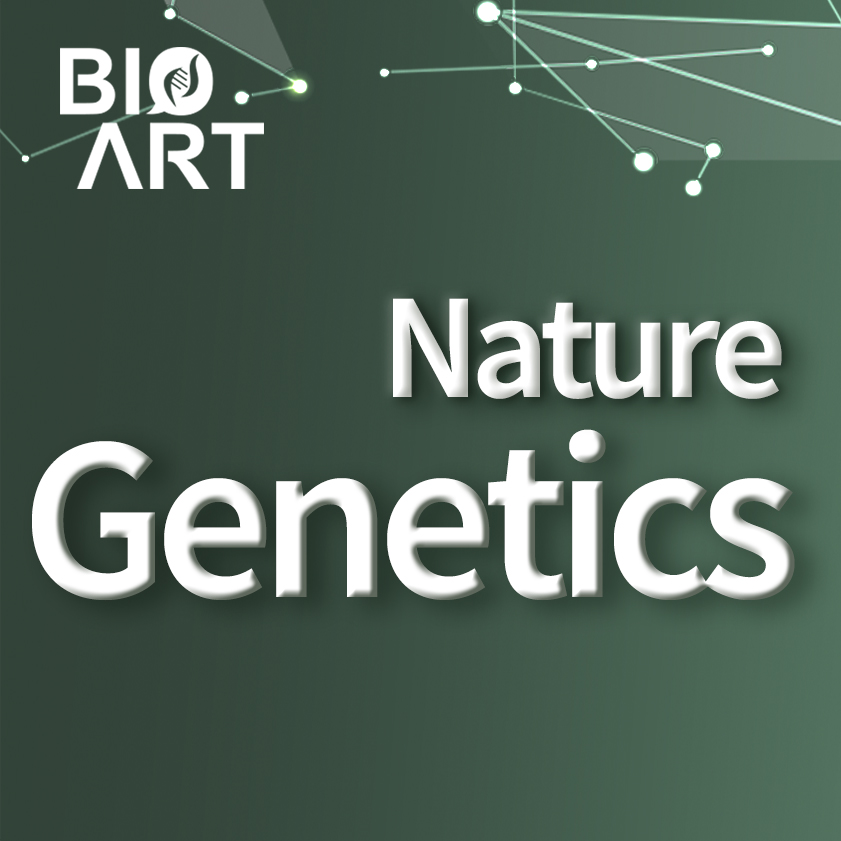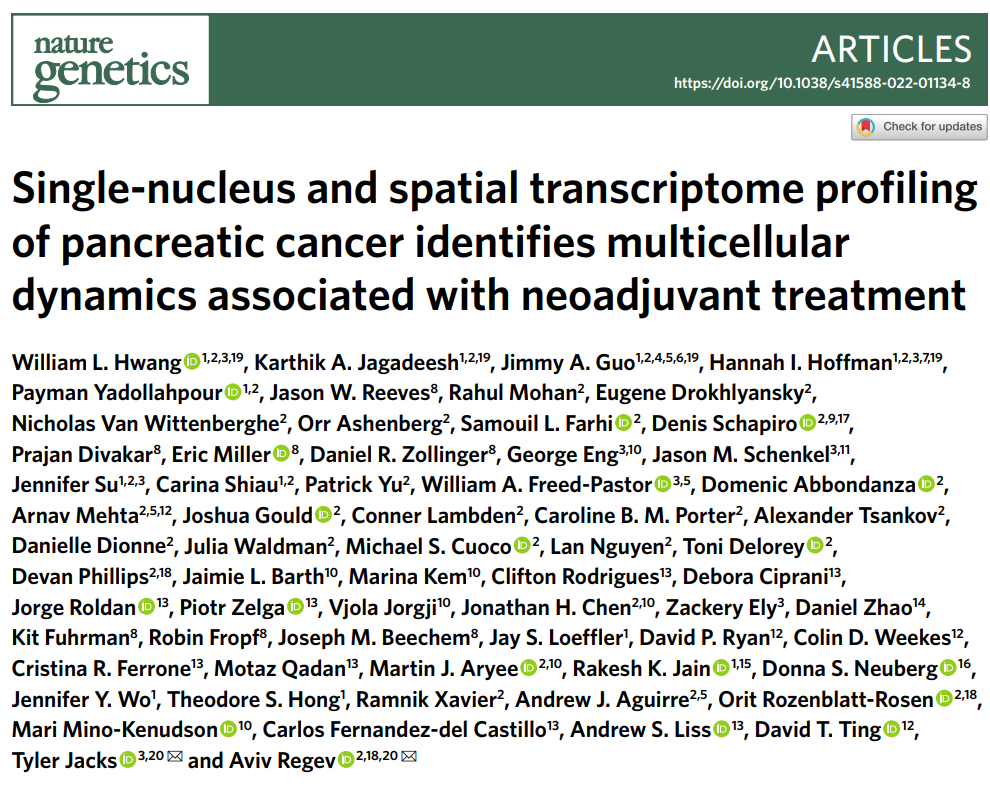Analysis of single -core and spatial transcription groups of pancreatic cancer Determined multi -cell dynamics related to new assisted therapy
Author:Bioart biological art Time:2022.08.16

Written article | qi
##
Pancreatic Ductal Adenocarcinoma (PDAC) is a highly deadlike and refractory cancer. Therefore, the impact of pre -deciphering treatment on residual cancer cells and substrates to determine additional treatment vulnerabilities. On the one hand, most of the previous studies and analysis are the tumors of unparalleled patients. On the other hand, although the tumor microe environment (TME) will affect the effect of cytotoxic therapy, people's understanding of the spatial structure and multi -cell interaction in TME Still limited.

近日,来自美国哈佛-MIT博德研究所的Aviv Regev团队和MIT的Tyler Jacks 团队在Nature Genetics杂志上合作发表了一篇题为Single-nucleus and spatial transcriptome profiling of pancreatic cancer identifies multicellular dynamics associated with neoadjuvant treatment In the article, they constructed 43 neo-assisted chemotherapy (CRT) or unacceptable primary PDAC tumor specimens to 43 cell subtypes and space communities through SNRNA-SEQ and full transcription group digital spatial analysis (DSP). The high -resolution molecular landscape provides a framework for layers in clinical trials, and is used as a potential strategy targeted for specific cell table type and multi -cell interaction.

The author collected 224988 SNRNA-SEQ samples from 43 PDAC patients (25 received new assisted treatment, 18 unacceptable), determined 33 cell sub-groups and annotated based on known gene characteristics. Subsequently, the non -negative matrix decomposition (CNMF) learned the repeated expression procedures of vicious cells across different tumors and cancer -related fibroblasts (CAF), especially paying attention to the shared part of the cells from multiple patients, and determined 14 Malignant cell programs and 4 CAF programs reflecting spectrum or cellular status. In addition to the classic procedures that are strongly overlapped with the previously defined classic characteristics, the three programs correspond to scales, base cells, and mesenchymal states. Program and nerve endocrine samples. On the contrary, a large number of previous studies usually attribute secretion characteristics to non -malignant cells [1, 2]. Among them, a unique nerve ancestor cell (NRP) program is also enriched to the ways and genes of neuron development/migration/migration/adhesion and tissue stem cell module and hepatocyte nuclear activity.
Neo -assisted therapy is related to the significant differences between patient malignant and CAF program expression. In short, malignant NRP and nerve endocrine samples are significantly higher than unborn in CRT, while classic and squamous cells are lower. Compared with unprocessed, newly -assisted CRTL treatment also shows higher NRP program expression and lower classics, squamous cells, and base -like procedures. In order to evaluate the prognosis of malignant and CAF programs, the author scores them in a large number of RNA-SEQ data from TCGA and Pancurx/ICGC's unwavering and resection primary PDAC patients. Among them, NRP and squamous cell tumors are related to short progress time, while classic and immune regulation programs are related to longer progress time.
In order to break the spatial tissue in the multi -cell community in the decipline of cells and expression, the author uses Nanostring Geomx Human full transcription group (WTA) to perform DSP, and the RNA probe on the sliced section to capture and analyze interest areas (Roi) (Roi) MRNA count. The data of the data and the SNRNA-SEQ cells were then used to reflect the convolution, and the expression of each malignant and CAF programs was mapped to the ROI. The results showed that NRP and nerve endocrine sample malignant programs were more collected in the ROI of CRT. Finally, in order to identify the association of multi -cell space, the author associates each pair of features in the ROI to produce a vicious spectrum program, CAF program, the proportion of immune cell types, and vicious, vicious, fibroblasts and immune sections. The collaborative matrix has determined three multi -cell communities with different malignant, matrix and immune characteristics.
In general, this work reveals the tumor between pancreatic cancer and the diversity of the tumor, the spatial tissue of the discrete community in the tumor, the treatment -related clinical -related prognosis of the tumor of pancreatic cancer. These discoveries can be used to strengthen the study of precision oncology for pancreatic cancer.
Original link:
https://doi.org/10.1038/s41588-022-01134-8
references
1. Collisson, E. A., BAILEY, P., Chang, D. K. & BIANKIN, A. V. Molecular Subtypes of Pancreatic Cancer. Nat. Rev. Gastroenterol. 16, 207–220 (2019). 2.Of Pancreatic Ductal Adenocarcinoma and their Different Responses to therapy. Nat. Med. 17, 500–503 (2011).
Want to know more exciting content, come and pay attention to BIOART biological art


- END -
Decisive dosage?He broke the inherent thinking and proposed that he had tailor -made clothes

In 1989, this deafening view appeared on the most authoritative magazine in the fi...
Samsung Electronics delays 3 nano -chip production delays
Zhongxin Jingwei, June 22. According to Taiwan's Economic Daily, Samsung Electronics has denied reports on the mass production of the Korean media East Asia Daily on the 22nd. Earlier, the East As...